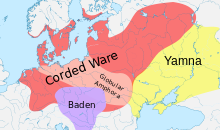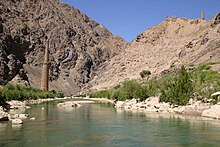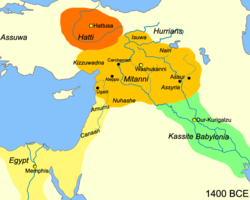In this post, I am giving the proof that the Aryans began their year when the sun rose on the day of vernal equinox in the asterism of Orion. That period corresponds to somewhere around 4,000 BC:
It may be noticed, however, that the non-Aryan races do not connect the idea of time, e.g., of the year and the seasons, with these beliefs, while it is the chief characteristic of the Aryan legends. We are, for instance, told that the dog (Dog Star - Sirius) commenced the year (RigVeda i.161.13) and that the Devayana (first half of the year) comprised the three seasons of Vasanta (Spring), Grishma (Summer) and Varsha ( Rains) - Shatapatha Brahmana ii.1.3.l. It is this feature of the Aryan legends that is most important for the purpose of our inquiry, while the coincidence, above pointed out, confirms, in a remarkable way, the genesis of the Aryan legends here proposed. The chief elements in the traditions of the three Aryan nations (European-Greek/Balkan, Iran and India) may thus be satisfactorily explained. It may, however, be contended that the two dogs of Yama spoken of in the RigVeda may not be the same as the Avesta dogs at the Bridge. A closer examination of the several passages in the RigVeda will, however, dispel such doubts. In the Vendidad xiii.9, the dogs are called 'peshupana', or those that guard the way to the region of death. The Avesta dog is 'chathru-chashmen' (Vendidad viii.16), while the Vedic dogs are described as 'chatur-akshau' (RigVeda x.34.11), both of which expressions mean 'four-eyed'.
The dogs in the Avesta and the Rigveda, however, differ in color. In Vendidad viii. 16 the dogs are said to be 'zairitem' or 'spaetem', zain (yellow or white) with yellow ears; while the dogs of Yama are said to be 'shabalau', spotted or variegated. But the difference is neither very material, nor such as cannot be accounted for. In the Rigveda we can trace the yellow color of the Avesta dogs. The antelope of the sun in RigVeda x.86.3 is said to be 'harita' or yellow, the 'zairitem' of the Avesta, and if we suppose this antelope to be no other than that represented by Orion, as the sun commenced the year at that point, we need not be surprised if the dogs in the Avesta are described as yellow, especially when in the AtharvaVeda viii.1.9. we find the two messenger dogs of Yama named as Shyama and Shabala, thus noting probably a difference in colour. The AtharvaVeda iv.20.7 mentions a four-eyed she-dog*, while in the Shatapatha Brahmana xiii.1.3.7 the adjective is applied to a dog; and the same animal is evidently intended in both places.
In the Zoroastrian scriptures the dogs at the Chinvat Bridge are sometimes spoken of in singular (Vendidad viii.16) and sometimes, as in RigVeda x.14.11. in dual (Vendidad xiii.9). This shows that we might disregard gender and number in the description of these dogs; and we are thus led to suppose that Sarama (a she-dog* guarding the gates of heaven) in the RigVeda is again to be identified with the dogs that watch the gates of heaven. There is an, incident in Sarama story which confirms the identification I have proposed. The Panis (tribes inimical to Aryans) tried to coax Sarama by offering her milk which she drank. On her return she denied having seen the cows of lndra, who thereupon kicked her and she vomited the milk. Now the mention of milk at once suggests the idea that it must be the milk in the galaxy on each side of which the two dogs are stationed. In RigVeda iv.57.5 'Shunasirau' are invoked in order that they may pour down upon the earth the milk, which they 'make in heaven'.
Prof, Max Miiller records a suggestion that 'Shunasirau', here spoken of, may be a very old name for the Dog-star, and with its derivative 'Sairya' would give us the etymon of 'Seirios'. In RigVeda vii.55.2 the Vastoshpati, 'the guardian of the house' in the form of a dog, is invoked and described as bright and red Sarameya (son of Sarama) on whose jaws spears seem to glitter, a description which answers so well with the appearance of the star Sirius (Dog Star), that with what has been said above we may at once identify the Sarameya with the Dog Star. I may here refer to the Shatapatha Brahmana ii.1.2.9, what has been said above we may at once identify the Sarameya with the Dog-star. I may here refer to the Shatapatha Brahrnana ii.1.2.9, where speaking of Mrigashiras, the Prajapati's body pierced by Rudra is described as his 'vastu'. May not 'Vastoshpati' be regarded as guardian, of the house? If so, it may be a further proof that 'Vastoshpati' represents the star Sirius, which, as it were, guards the head of Prajapati in the form of Orion or the antelope's head. But, apart from this suggestion, I would finally quote Rig.i.161.13, where it is expressly stated that "the dog awakened" the Ribhus, the genii of the seasons, at the "end of the year".
* The forum does not allow me to use the correct word.
BG Tilak, "Orion or the Researches into the Antiquity of the Vedas"



